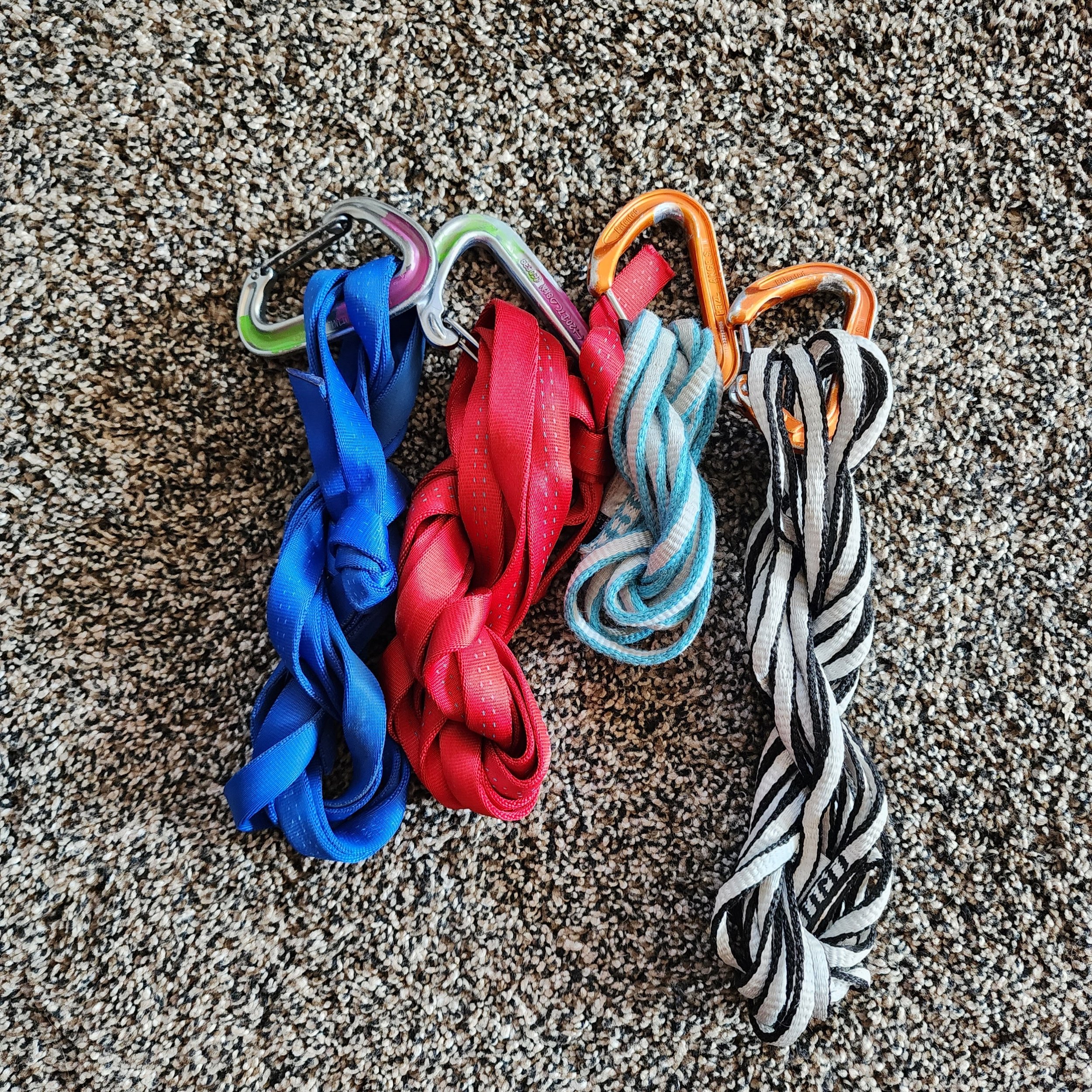Old school slings: when to use them, when to leave them (literally)
We live in an age of super lightweight and hyper-functional gear. Dyneema (generically, High Modulus Polyethylene (HMPE)) is everywhere. All of my slings are Dyneema, as are some of my harnesses. They’re light, low-bulk, and highly abrasion resistant. Why would anyone choose nylon instead?
My “ready to bail” tied slings on the left (228g), compared to my standard kit on the right (163g), a difference of 65g
While “fast and light” might be the motto of the alpine, there’s more to consider when climbing in remote areas. I’m planning a trip to a rarely climbed ridge and peak in Wyoming. Because of the unpredictable weather, I want to be able to bail at any point of the route. Rappelling is a great way to get down quickly, but it often requires gear to be left behind. I’m much more willing to ditch some tied nylon webbing and a cheapskate locker I don’t care about as opposed to the expensive kit I use on a daily basis. Additionally, tied slings are more versatile, allowing for threads, simple joining of multiple slings, and more space between gear when building anchors. The 9/16” nylon slings I’ve elected to bring are roughly 240cm and 120cm (really two 60cm slings together) when tied in a loop. Add some hexes, tricams, or extra nuts and now I have plenty of cheap bail options at my disposal.
Luke on Matthes Crest during our recent Tuolumne Triple Crown (Tenaya, Matthes, Cathedral Traverse)
So often we assume things are going to go smoothly and only bring the bare minimum. A roll of tape and handful of asprin instead of a med kit. Minimal water and the hope of a stream along the way. Rain jacket left in the car. When things work out we applaud ourselves on our accomplishment, not thinking about what could have been if only one variable was different and caused the entire day to derail. Multi-pitch climbing is really easy if nothing goes wrong. I believe that lures novices into a false sense of security when they first begin stacking pitches on top of one another. While they can get up and down a route, I’ve seen plenty of folks at a complete loss when they rap past a belay station, get a rope stuck, need to ascend, or drop their rappel device. Some issues can be solved with different or more gear, but ultimately the most useful tool is the one between your ears. Knowledge weighs nothing. Unfortunately, it is costly. Varied experiences. Past mistakes. Hours of study. This is the cost of wisdom, either your own or someone else’s. Ultimately, that’s what climbing guides offer to their students: years of honing a craft along with how to present information and share philosophies.

